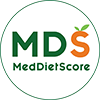The impact of larger serving sizes
You've no doubt heard that the U.S. Food and Drug Administration (FDA) is planning to change the Nutrition Information label that is required on nearly all foods. One of the ways they're considering changing it is in the area of portion size. The Nutrition Labeling and Education Act of 1990, which first required the the Nutrition Label we have now, had its portion sized based on "Reference Amounts Customarily Consumed" (RACC), which means that portion sizes are to be based on what people actually eat, not what they ought to eat. The problem is that these RACC are based on surveys conducted in 1977-78 and 1987-88 - and as you probably know if you've been reading our columns for a while, portion sizes have increased in the last several decades.
There's been some concern about the effect that increasing labeled serving sizes might have on what people eat. I've given frozen food companies a hard time in our food reviews when they label what is clearly a single-serving package as containing two servings - it's simply too easy for people to overlook the little "servings: 2" on the package and believe that the number of calories you're consuming are the same as those listed on the box - and not 2 times what's listed. The outcome of that sort of labeling disengenuousness leads all too easily to consuming more calories than you should.
On the other hand, what people actually eat can also be affected by the size of the package overall as well as the size of the bowls or plates people use. A team at George Washington University designed three smaller surveys to look at people's perceptions of serving sizes in relation to the portion size listed on the packages of various foods (Appetite 2016;101:71-79).
In the first study, over 200 men and women responded to an online survey. Each participant was shown a photograph of a package of a familiar food along with a standardized nutrition label. Half the time the participants were shown a nutrition label with the current, standard portion size listed, and the other half the time the nutrition label listed a portion amount twice as large as the standard portion size. Foods included such items as Red Baron Frozen Pizza (standard portion size = 1/4 pizza or larger portion size = 1/2 pizza), Barilla Penne Pasta (standard portion = 2 ounces, larger portion = 4 ounces), and Applegate Farms Sliced Ham (standard portion = 2 slices, larger portion = 4 slices). After viewing the package and the nutrition label with the portion size, the participants indicated how healthy they thought the food was and whether the portion size listed reflected what they felt an average person would eat.
In a second online survey of almost 350 people, different foods were used but their accompanying nutrition labels were again presented with either standard or larger serving sizes. In this case the participants gave their opinion regarding the foods' healthfulness, then indicated the amount of the package they personally would eat by clicking on the package to indicate the fraction of the package.
In the third and final study, nearly 200 undergraduate students participated in unrelated research, but as a thank you were told they would receive a reward of M&M's in addition to the usual course credit. The participants were shown the nutrition label for the M&M's and were required to report the number of calories along with the amount of fat and sugar listed (to ensure they actually read the label). Half of the labels showed a standard serving size, while half showed a serving size double the standard. The participants were then given a pre-weighed amount of M&M's in a bowl and allowed to eat as many as they wished. The amount they actually consumed was then recorded by the researchers.
In the first and second study, the participants fairly consistently rated the foods with larger serving sizes to be less healthy than the foods with smaller serving sizes. In the first study, the participants agreed that the larger serving size were more representative of what they would actually eat, while in the second study the different serving sizes listed in the nutrition labels did not appear to affect how much of the package people believed they would consume - although they estimated the number of calories they would consume would be higher when shown a larger serving size on the label. In the third study, those students shown the label with the larger serving size ate fewer M&M's than those who saw the label with the smaller serving size.
What this means for you
The authors interpret these results to mean that larger serving sizes listed on the package might mean that people would consume less, both because larger serving sizes are seen as less healthy and by leading people to overestimate the number of calories they are likely to consume. Your take-home, until the FDA completes its review of and finalizes changes to the Nutrition Information box, is that it's important to know what recommended serving sizes of various foods actually are (here's a guide), and to read the Nutrition Information label carefully and consider whether the amount you're going to consume is accurately reflected in the portion size on the label. If it's not, you'll need to do the math.
First posted: April 13, 2016




